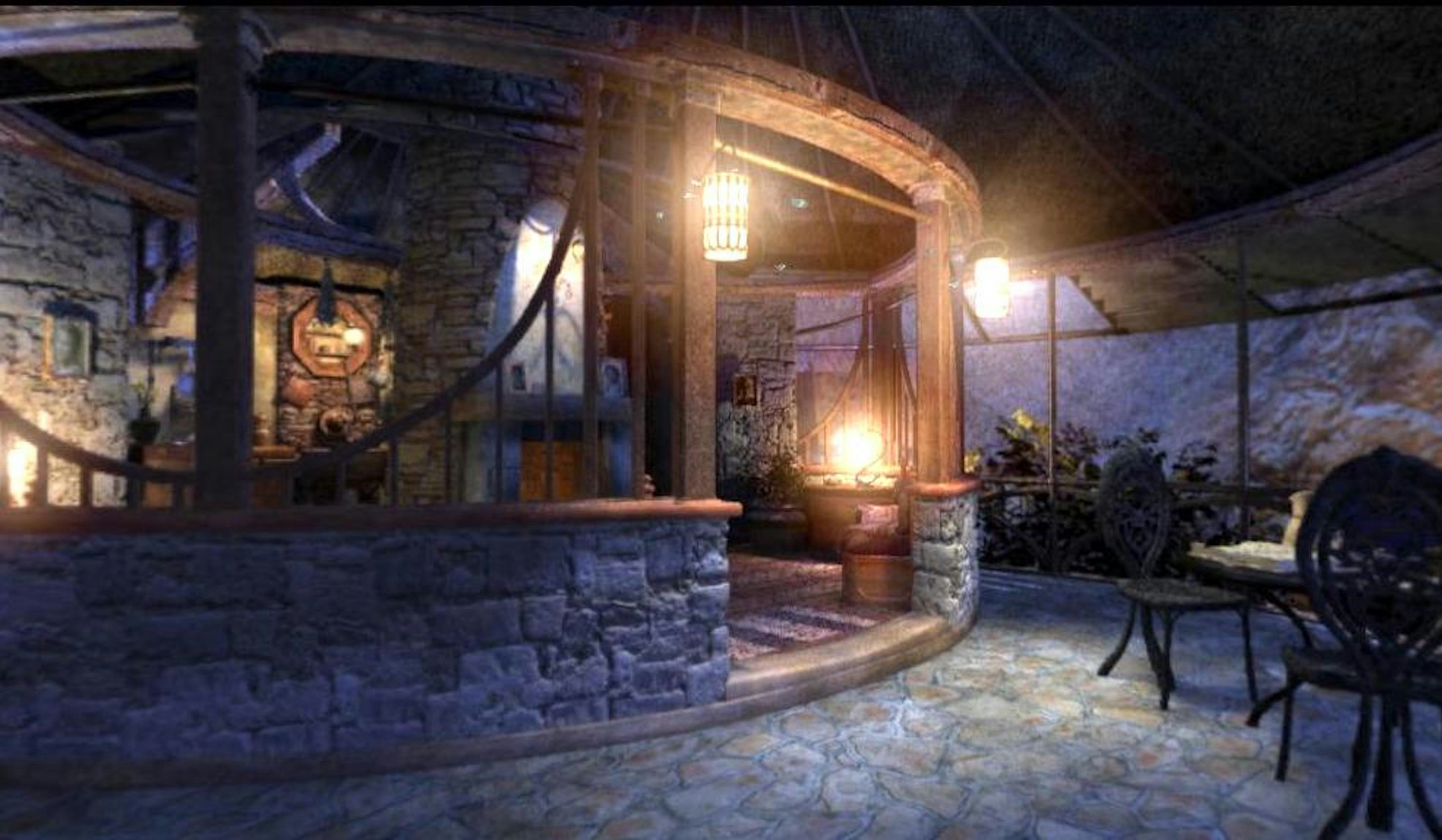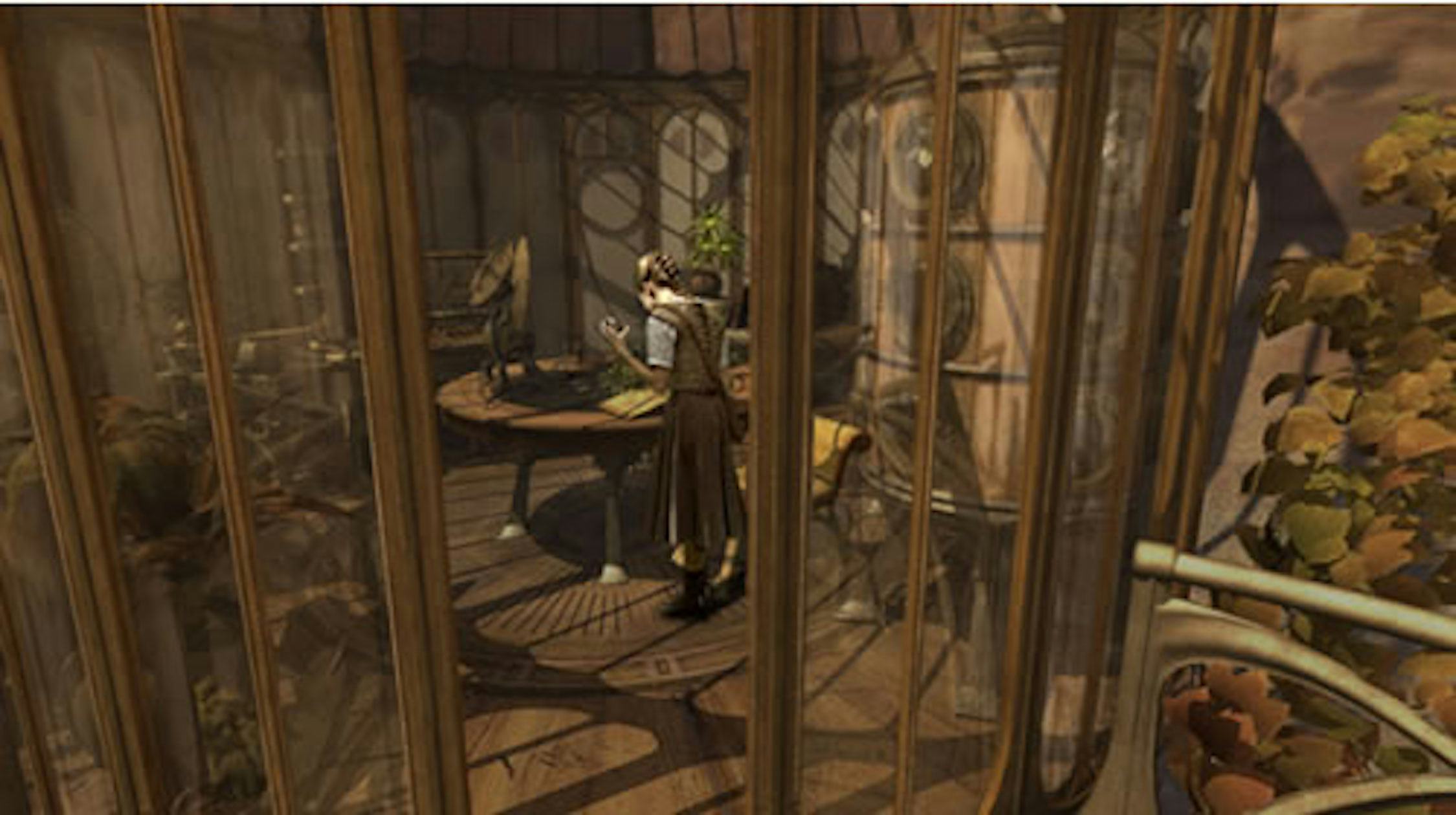
Before 1993, there was never a game quite like Myst. Created by brothers Rand and Robyn Miller, the first Myst was like an early version of ASMR for video games. With gentle and haunting atmospheric aesthetics, Myst created a video game that was paradoxically calming and addictive at the same time. Arguably, the first game in 1993 was the best, because it was the purest expression of how this game forever altered the art form of video games. But, twenty years ago — on September 30, 2004 — with the release of Myst IV: Revelation, the franchise managed to outdo itself in a way that has never been matched. If you’ve never played a Myst game, you could do no better than to start right here.
Canonically, Myst IV is both a sequel and prequel to the first game. Early on the player is summoned by Atrus, the mysterious writer who creates books that link worlds called “the Ages.” Like the previous game, Myst III, the player is a friend of Atrus, and this time tasked with finding Artrus’ daughter.
The game builds on the retroactive continuity from Myst III, which revealed that Artus’ sons — Sirrus and Achena — were not the only of his children. And in this game, Yeesha, the person you’re meant to locate, becomes a kind of MacGuffin for the story. This makes her a bit like the titular Zelda or other missing female characters in various games, which, in some ways, could be viewed as a reductive decision for the game.
And yet, even if the storyline of Myst IV is technically more convoluted, the gameplay experience here was much more streamlined. This is the first time Myst gave characters a camera, so they could document clues and access those clues more quickly. This video game device wasn’t invented by Myst, but the popularity of the game certainly changed the way players can “cheat” in puzzle games and clue-gathering. (In fact, the upcoming new Indiana Jones game, The Great Circle, is employing a camera for in-game clues and easy reference for the player.) There was also an onscreen journal, which replaced the post-it note or wire-rimmed notebook that many players relied on in the previous decade. In fact, while this detail is utterly forgotten today, the original Myst came with blank pages in the back of the instruction manual, specifically so players could write down their own clues — with pen or pencil — while they were playing. The digital version of the journal was essentially an end to this era, and while innovative at the time, would be utterly unthinkable in a version of the game today.
Myst IV also introduced the time-saving “Zip mode,” which allowed you to move through nodes, to avoid going through the tedious process of exploring an area you already understood.
Again, this modern advent would make a game like Myst basically unplayable in 2024, which is why, combined with the camera and the journal, Myst IV is the most modern of the existing games. While elder millennials and Gen-Xers had to put up with what is now considered sub-par graphics, we also had to contend with slower-than-reasonable gameplay. Now the slowness of Myst is debatably part of its charm. But because Myst IV feels less archaic than its predecessors, it automatically is the most playable of the games by today’s standards.

Myst IV also perfectly captures the unique vibe of all the previous games, and even features original vocals on a song from Peter Gabriel (formerly of the rock band Genesis) as well as a solid score from videogame soundtrack legend Jack Wall. This was only Wall’s second video game score, following Myst III, but after Revelation, he went on to compose the music for various classic game franchises including Mass Effect and Call of Duty. Essentially, if the vibes of Myst IV remind you of other great games — even wildly different ones — Wall’s music is at least part of the reason why.
Overall, though Myst V was technically the last game in the franchise just one year later, Myst IV is probably a better entry point for players who are new to the series. And, for those looking back fondly on the franchise in general, starting with the first game might not be as enjoyable as you remember. In 2004, with Myst IV, the mechanics of the game were brought into the modern age, and essentially, created a balanced version of all the pre-existing games, in one. Just as Atrus can link various worlds through his powers, Myst IV managed to bring all the charm and intrigue of the entire series into just one game, which is still fantastic, twenty years later.







